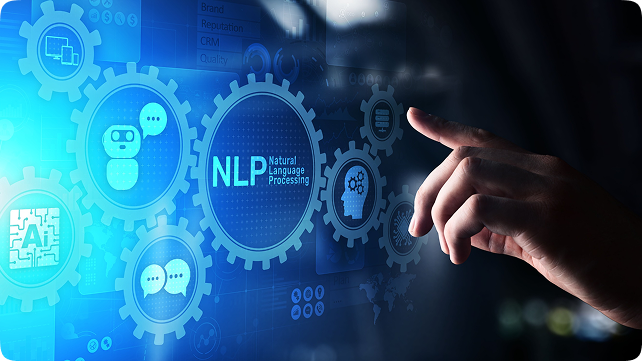In today’s digital era, professionals are drowning in data. From lengthy research papers and legal contracts to complex business reports, the flood of information can be overwhelming. This overload often leads to fatigue, slower decision-making, and reduced productivity. Imagine sifting through hundreds of pages just to extract key insights; it’s exhausting and inefficient.
That’s exactly where Document Summarization powered by Natural Language Processing (NLP) steps in. This technology is transforming how we consume and interpret information. By leveraging advanced algorithms, NLP automatically extracts the most essential details from lengthy documents and presents them as concise, meaningful summaries. The result? Hours of reading reduced to minutes, without losing accuracy or context.
What Is Document Summarization and Why Does It Matter Today?
Essentially, document summarization is the process of creating a shorter version of a text while retaining its key meaning and intent. Think of it as a modern evolution of the executive summary, only now powered by artificial intelligence that operates at incredible speed and scale.
In today’s workplace, document summarization has evolved from a convenience to a necessity. Here’s why:
- It accelerates decision-making for leaders and analysts.
- It unlocks employee productivity by automating repetitive reading tasks.
- It supports compliance and risk management through faster, more thorough document review.
Ultimately, summarization answers a critical question for every professional: “How can we understand long documents quickly without sacrificing accuracy?”

NLP Summarization Techniques: How Machines Learn to Summarize Like Humans
1. Extractive Summarization: The Intelligent Highlighter
Extractive summarization acts like a highly trained highlighter. It identifies the most significant sentences, phrases, or keywords directly from the original text and stitches them together into a summary.
Because it uses original sentences, this method ensures factual accuracy. However, the resulting summaries can sometimes feel slightly mechanical, since they rely on existing wordings rather than rephrased ideas.
How It Works:
The system evaluates sentences based on:
- Keyword frequency – The more often important terms appear, the more likely they matter.
- Positional relevance – Sentences in introductions or conclusions often carry core ideas.
- Semantic connection – Algorithms assess how closely each sentence relates to the document’s main theme.
2. Abstractive Summarization: The Paraphrasing Expert
Abstractive summarization goes a step further. It writes new sentences. Instead of lifting text, it paraphrases and rephrases ideas to produce a fluent, human-like summary.
Powered by advanced AI models such as BERT, GPT, and T5, this method captures context and linguistic nuance remarkably well. It produces summaries that sound natural and coherent, much like how a person would summarize and write a document.
These deep learning models:
- Learn from massive datasets to understand how language conveys meaning
- Interpret a document’s core ideas beyond individual words.
- Generate coherent, readable sentences that retain the original message
Abstractive summarization is ideal for research summaries, client reports, and analytical briefs, where readability and tone are as important as precision
3. Hybrid Approaches: The Best of Both Approach
Modern AI summarization tools like iCaptur’s AI Document Summarizer use a hybrid approach, combining the strengths of both extractive and abstractive techniques.
How it works:
- Extractive models first identify the document’s key ideas and critical details.
- Abstractive algorithms then refine and rewrite those ideas into natural, flowing language.
The outcome is a summary that’s both accurate and readable, ideal for complex materials such as business contracts, legal documents, and healthcare case reports.
This dual-layered approach makes hybrid summarization perfect for complex business documents, contracts, legal reports, and healthcare case summaries, where both factual precision and readability are essential.

How NLP Summarization Works
Though it may seem magical, NLP summarization follows a logical, layered process that mergers linguistics, statistics, and AI.
Step 1: Text Preprocessing
The raw text is cleaned by removing punctuation, symbols, and irrelevant data. Tokenization then splits the text into words and sentences, creating a structured dataset ready for analysis.
Step 2: Feature Extraction
The system identifies key linguistic and semantic features like word frequency, entities, syntax, and topic relevance. This helps the system understand which parts of the document carry the most meaning.
Step 3: Model Application
Depending on the chosen approach—extractive, abstractive, or hybrid, the NLP model interprets and condenses the text. Transformer-based architectures like GPT, BERT, and T5 perform exceptionally well here, as they capture relationships and context far better than earlier models.
Step 4: Post-Processing
Finally, the system refines the summary for grammar, coherence, and tone. The model ensures the text flows naturally and aligns with the context of the source content.
Modern AI summarizers don’t just shorten text, they refine understanding, turning dense content into clear insights.
Where NLP Summarization Makes a Real Difference
Document summarization isn’t confined to one field; it’s quietly transforming how entire industries operate.
1. For Business Leaders: Clarity Amid Complexity
Executives deal with endless reports, financial statements, and long email threads. NLP summarization acts as a digital assistant, turning hundreds of pages into concise briefs that highlights key metrics, risks, and opportunities. It helps leaders focus on strategy, not paperwork.
2. For Legal and Compliance Teams
Lawyers and compliance officers navigate volumes of contracts, case files, and regulations. Summarization tools quickly extract relevant clauses, obligations, or precedents, allowing teams prioritize what truly needs attention.
3. For Healthcare Professionals
Doctors often spend more time reading patient histories than treating patients. NLP summarization generates concise overviews that compile symptoms, test results, and diagnoses. It also summarizes medical research papers into actionable insights, giving practitioners time to focus on clinical decision making and not paperwork.
4. For Researchers and Students
With academic publications multiplying every year, researchers need quick ways to filter and learn information. Summarization tools can condense papers into key findings and methodologies, saving hours on literature reviews and helping scholars focus on innovation over information overload.
Solutions like iCaptur’s summarization engine can automatically condense large volumes of text such as reports, policies, or research papers into clear, insight-rich summaries. Its adaptive NLP model works across sectors, helping professionals extract key information faster and make smarter, data-driven decisions.

Benefits of NLP Document Summarization
When implemented effectively, NLP-based summarization delivers measurable advantages across industries:
- Time Efficiency: Automates reading and reviewing, saving hours of manual effort.
- Quick Insight Extraction: Highlights critical information within seconds
- Enhanced Understanding: Simplifies complex materials into digestible summaries.
- Scalability: Processes thousands of documents simultaneously, ideal for enterprises and data-heavy environments.
- Consistency: Delivers uniform, unbiased summaries across all datasets.
- Productivity Boost: Teams can act faster on insights, improving operational flow.
- Strategic Clarity: Converts cluttered text into actionable intelligence that drives decisions.
In short, NLP summarization helps organizations do more with less—less time, less reading, and far less cognitive strain.
Tools You Can Use: From Developer Frameworks to Ready-Made AI Platforms
Not all summarization tools are created equal. Depending on your technical resources and goals, you can choose between developer-friendly frameworks for custom setups or off-the-shelf AI software for instant deployment.
1. Dedicated AI Summarization Software: iCaptur
Platforms like iCaptur’s AI Document Summarizer are built for business professionals who want instant, accurate insights
Key Features:
- Effortless document upload and summarization
- Scalable processing for diverse document types
- Integrated data extraction and insight generation
- Hybrid NLP models ensuring both factual precision and natural readability
- Adaptive summarization with NLP models
- Seamless integration within existing systems
2. Open-Source NLP Libraries
For organizations with in-house AI teams, open-source frameworks provide full customization:
- Hugging Face Transformers: Offers pre-trained models for extractive and abstractive summarization.
- spaCy: Ideal for high-performance extractive summarization.
- NLTK: A classic toolkit for foundational NLP analysis and experimentation.
These libraries enable developers to create tailored summarization workflows for enterprise or academic needs, though they require technical expertise and processing power.
Conclusion: Turning Overload into Opportunity
In an age where information is power, document summarization isn’t optional: it’s essential. NLP summarization merges linguistic intelligence with AI precision to help individuals and organizations think faster, act smarter, and stay focused.
Whether you choose a developer framework or an all-in-one business platform like iCaptur, the goal remains the same: turning information overload into insight and action.
In the modern world, attention is the scarcest resource. NLP-powered document summarization ensures that every second you spend reading truly counts.
Ready to transform how your organization handles information? Connect with us to unlock the full potential of your documents — summarize, extract, and analyze insights instantly with AI-powered precision.
Enhancing your workflow through
AI integration is key to future success.
processes and improve efficiency!





